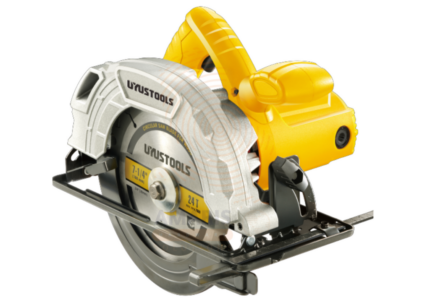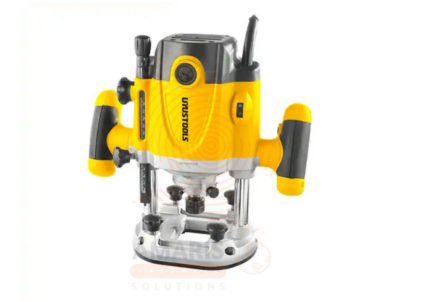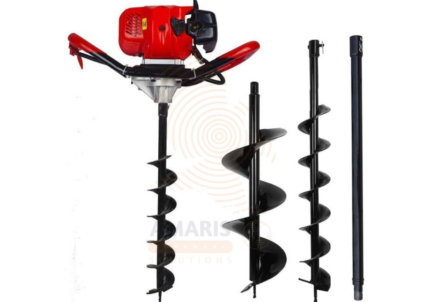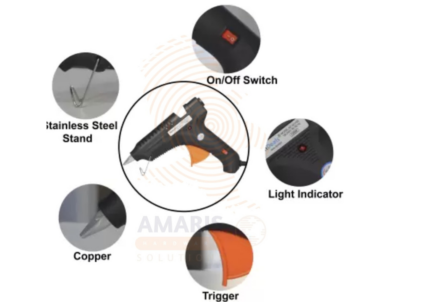
Masonry Drill Bit
$12.96 Original price was: $12.96.$12.31Current price is: $12.31.

Mini Claw Hammer
$15.27 Original price was: $15.27.$14.51Current price is: $14.51.
Masonry Drill Set
WhatsApp Order
A masonry drill bit set typically refers to a collection of three drill bits specifically designed for drilling into masonry materials. These drill bits are constructed with durable materials such as tungsten carbide or similar hard alloys, which enable them to effectively penetrate hard surfaces like brick, concrete, or stone. The set usually includes different sizes of drill bits to accommodate various applications and project requirements. These masonry drill bits often feature specialized flute designs and tips to enhance drilling performance in tough materials, providing users with a versatile and reliable toolset for masonry-related tasks.
Description
USES OF A MASONRY DRILL BIT SET
- Installing Anchors and Screws:
- Masonry drill bits are essential for drilling holes in concrete or brick walls to install anchors and screws. This is common in tasks such as hanging shelves, pictures, or other wall-mounted items.
- Drilling for Electrical and Plumbing Installations:
- Electricians and plumbers often use masonry drill bits to create openings in concrete or brick walls for running wires, conduits, or pipes.
- Home Renovations and Remodeling:
- Masonry drill bits are crucial for various renovation projects, such as when installing new windows or doors in concrete walls, or when creating openings for vents and ducts.
- Concrete and Stone Construction:
- Masonry drill bits are indispensable in construction projects involving concrete or stone, where holes need to be drilled for various purposes, including joining materials together.
- DIY Concrete and Masonry Projects:
- Individuals working on do-it-yourself (DIY) projects that involve concrete or masonry often use these drill bits for tasks such as building outdoor structures, like patios, or creating garden features.
- Repairing or Securing Masonry Structures:
- Masonry drill bits are useful for repairing or reinforcing existing masonry structures. This can include tasks like securing loose bricks or adding structural supports.
- Installing Concrete Anchors for Heavy Loads:
- In situations where heavy loads need to be supported, such as installing large shelves or brackets, masonry drill bits are used to create holes for anchors that provide strong support.
- Creating Access Points for Wiring and Cables:
- In both residential and commercial settings, masonry drill bits are employed to create access points for running wiring and cables through walls and floors.
- Outdoor Projects:
- Masonry drill bits are often used for outdoor projects like building retaining walls, installing outdoor lighting fixtures, or constructing outdoor kitchens.
- Tile Installation:
- When working with ceramic or porcelain tiles, masonry drill bits can be used to create holes for mounting fixtures, such as towel bars or soap dispensers, on bathroom or kitchen walls.
SAFETY HANDLING PRECAUTIONS
- Wear Personal Protective Equipment (PPE):
- Always wear appropriate PPE, including safety glasses or goggles to protect your eyes from debris and dust. Additionally, wear ear protection if the drilling process generates loud noise, and use a dust mask to avoid inhaling dust particles.
- Work in a Well-Ventilated Area:
- When drilling into masonry materials, dust is often produced. Work in a well-ventilated area to minimize inhalation of dust. If working indoors, consider using a dust extraction system or wearing a suitable dust mask.
- Secure the Workpiece:
- Ensure that the material you are drilling into is securely positioned and won't move during the drilling process. This helps prevent accidents and ensures more accurate drilling.
- Inspect Drill Bits Before Use:
- Check the masonry drill bits for any signs of damage, such as cracks or dull tips, before using them. Damaged bits can be less effective and pose a safety risk.
- Follow Manufacturer's Guidelines:
- Adhere to the manufacturer's instructions and guidelines for both the drill and the drill bits. This includes recommended operating speeds, proper usage, and any specific safety recommendations.
- Use the Right Size and Type of Drill Bit:
- Choose the appropriate size and type of masonry drill bit for the specific task. Using the wrong bit can lead to reduced efficiency, overheating, or breakage.
- Secure Power Cords:
- Keep power cords and extension cords away from the drilling area to prevent tripping hazards. Ensure that cords are in good condition and properly grounded.
- Avoid Excessive Pressure:
- Let the drill bit do the work. Applying excessive pressure may cause the drill bit to overheat, become less effective, or break. Use a steady, controlled force while drilling.
- Monitor Drill Bit Temperature:
- Periodically check the temperature of the drill bit during use. If it becomes excessively hot, stop and allow it to cool down to prevent damage to the bit and maintain optimal performance.
- Secure the Power Source:
- Before changing drill bits or making any adjustments, disconnect the power source to prevent accidental starts. Ensure the drill is switched off when not in use.
- Be Mindful of Surroundings:
- Be aware of your surroundings, especially when working at heights or in tight spaces. Keep bystanders at a safe distance to avoid potential injuries.
- Handle Drill Bits with Care:
- When changing drill bits, handle them with care. Sharp edges can cause injuries. Use proper tools and techniques to secure and remove bits.
Related products
Cement Blender
A cement blender is a mechanical device designed for the purpose of mixing and blending various components of cementitious materials, such as cement, sand, and water, to create a homogenous mixture. This blended mixture is commonly used in construction and building projects, particularly for applications like concrete production. The blender typically features a rotating drum or container that facilitates the thorough mixing of the ingredients, ensuring a consistent and uniform composition for the construction materials.
Circular Saw
A circular saw is a power tool equipped with a rotating circular blade, typically with teeth along its edge, designed for cutting various materials such as wood, plastic, metal, or masonry. It is commonly used in carpentry, construction, and other applications to make straight or beveled cuts with precision and efficiency. The circular saw is versatile and can be handheld or mounted on a table or other stationary surface, depending on the specific model and intended use.
Circular Saw Blade for Wood
A circular saw blade for wood is a cutting tool designed specifically for use with a circular saw. It typically consists of a flat, circular disc with sharp teeth along its outer edge. The blade is mounted onto the arbor of the circular saw, and as the saw operates, the blade spins rapidly to cut through wood materials. Circular saw blades for wood are specifically engineered to make efficient and clean cuts in wood, and they come in various sizes and tooth configurations to suit different cutting tasks and wood types. The teeth on the blade are strategically shaped and arranged to ensure smooth and precise cutting while minimizing splintering and tear-out on the wood surface.
Electric Router
An electric router is a power tool used in woodworking and carpentry for hollowing out an area or creating a specific profile on the edge of a material, typically wood. It operates by spinning a cutting tool or bit at high speeds, allowing for precise and controlled removal of material. Electric routers are versatile tools and can be equipped with various bits to perform tasks such as shaping, grooving, trimming, and forming decorative edges. They are widely employed in both professional and DIY settings for tasks that require accurate and intricate detailing in woodworking projects.
Forstner Bits
A Forstner bit is a specialized woodworking drill bit designed for creating flat-bottomed holes with a clean and precise finish. Unlike traditional twist drill bits, Forstner bits have a cylindrical, flat-bottomed shape with a center point and cutting edges along the circumference. These bits are commonly used when a smooth and accurately sized hole without breakthrough is required in woodworking applications, such as for drilling holes for dowels or creating recesses for hardware like hinges. Forstner bits are known for their ability to produce clean and splinter-free boreholes, making them popular among woodworkers and cabinetmakers for tasks that demand precision and aesthetics.
Forstner Drill Bits
A Forstner drill bit is a specialized cutting tool used in woodworking to create flat-bottomed holes with smooth sides. Unlike traditional twist or spade drill bits, Forstner bits are characterized by a cylindrical shape with a flat bottom and a rim that cuts the perimeter of the hole. These bits are well-suited for precision drilling tasks, such as creating boreholes for dowels or hinge cups, as they produce clean and accurate results, minimizing tear-out and splintering in the wood. Forstner drill bits are commonly used in cabinetry, furniture making, and other woodworking applications where precise and clean hole drilling is essential.
Gasoline Auger Machine
A gasoline auger machine is a power tool designed for drilling holes in the ground using a rotating helical screw blade, commonly known as an auger. Unlike electric or manual augers, a gasoline auger machine is powered by a gasoline engine, providing greater mobility and independence from electrical power sources. This type of machine is commonly used in construction, landscaping, and agriculture for tasks such as digging holes for fence posts, planting trees, or installing various types of foundations. The gasoline engine provides the necessary power to turn the auger bit efficiently, making it suitable for heavy-duty and remote applications where access to electricity may be limited.
Glue Gun
A glue gun, specifically a 40-watt glue gun, is a handheld tool designed for dispensing hot melt adhesive in a controlled and precise manner. It typically consists of a heating element powered by a 40-watt electrical system, a trigger mechanism to control the adhesive flow, and a nozzle for directing the melted glue. The glue stick, usually made of thermoplastic materials, is inserted into the gun, melted by the heating element, and then extruded through the nozzle as a liquid adhesive. This versatile tool is commonly used in various DIY projects, crafts, and home repairs due to its quick and efficient bonding capabilities. The 40-watt power rating indicates the electrical power consumed by the glue gun to heat the adhesive to its melting point.


 Acrylic Sealants
Acrylic Sealants Construction Adhesives
Construction Adhesives Double-Sided Tape
Double-Sided Tape Duct Tape
Duct Tape Electrical Tape
Electrical Tape Epoxy & Resins
Epoxy & Resins Masking Tape
Masking Tape
 Automotive Wrenches & Socket Sets
Automotive Wrenches & Socket Sets Battery Chargers & Jump Starters
Battery Chargers & Jump Starters Car Jacks & Stands
Car Jacks & Stands Car Wash & Detailing Products
Car Wash & Detailing Products Diagnostic Tools
Diagnostic Tools Tire Inflators
Tire Inflators Vehicle Lighting
Vehicle Lighting Oil & Lubricants
Oil & Lubricants
 Adhesives & Sealants
Adhesives & Sealants Bricks & Blocks
Bricks & Blocks Cement & Concrete
Cement & Concrete Drywall & Plaster
Drywall & Plaster Flooring (Tiles, Wood, Laminate)
Flooring (Tiles, Wood, Laminate) Lumber & Plywood
Lumber & Plywood Paints, Primers & Coatings
Paints, Primers & Coatings Insulation Materials
Insulation Materials Roofing Materials
Roofing Materials
 Circuit Breakers
Circuit Breakers Electrical Cables & Wires
Electrical Cables & Wires Switches & Sockets
Switches & Sockets Fuses & Relays
Fuses & Relays Connectors & Terminals
Connectors & Terminals Electrical Boxes & Panels
Electrical Boxes & Panels Conduit & Fittings
Conduit & Fittings Lighting Fixtures & Bulbs
Lighting Fixtures & Bulbs Extension Cords & Power Strips
Extension Cords & Power Strips
 Anchors
Anchors Bolts
Bolts Clips & Clamps
Clips & Clamps Screws
Screws Nuts
Nuts Washers
Washers Rivets
Rivets Nails
Nails Threaded Rods
Threaded Rods
 Hammers
Hammers Measuring Tools (Tapes, Levels, Calipers)
Measuring Tools (Tapes, Levels, Calipers) Screwdrivers
Screwdrivers Pliers & Cutters
Pliers & Cutters Saws & Blades
Saws & Blades Chisels & Punches
Chisels & Punches Allen Keys & Hex Keys
Allen Keys & Hex Keys Ratchets & Socket Sets
Ratchets & Socket Sets Wrenches & Spanners
Wrenches & Spanners
 Power Tool Accessories (Blades, Bits, Discs)
Power Tool Accessories (Blades, Bits, Discs) Rotary Tools
Rotary Tools Saws (Circular, Jigsaw, Reciprocating)
Saws (Circular, Jigsaw, Reciprocating) Drills & Drivers
Drills & Drivers Grinders & Sanders
Grinders & Sanders Heat Guns
Heat Guns Nail Guns
Nail Guns Impact Wrenches
Impact Wrenches Batteries & Chargers
Batteries & Chargers
 Pipes & Fittings (PVC, Copper, PEX)
Pipes & Fittings (PVC, Copper, PEX) Plumbing Tools
Plumbing Tools Pumps & Motors
Pumps & Motors Sealants & Adhesives for Plumbing
Sealants & Adhesives for Plumbing Valves & Taps
Valves & Taps Water Heaters
Water Heaters Drainage Systems
Drainage Systems Faucets & Fixtures
Faucets & Fixtures Hoses & Tubing
Hoses & Tubing
 Hinges & Latches
Hinges & Latches Hooks & Brackets
Hooks & Brackets Window Hardware
Window Hardware Chains & Cables
Chains & Cables Casters & Wheels
Casters & Wheels Shelving & Storage Systems
Shelving & Storage Systems Door Handles & Locks
Door Handles & Locks Drawer Slides & Cabinet Hardware
Drawer Slides & Cabinet Hardware
 Personal Protective Equipment (PPE)
Personal Protective Equipment (PPE) Respirators & Masks
Respirators & Masks Safety Glasses
Safety Glasses Safes
Safes Security Cameras
Security Cameras Gloves
Gloves Helmets
Helmets Ear Protection
Ear Protection Fire Safety Equipment
Fire Safety Equipment Locks & Padlocks
Locks & Padlocks Motion Sensors & Alarms
Motion Sensors & Alarms
 Garden Fencing
Garden Fencing Garden Furniture Hardware
Garden Furniture Hardware Lawn Mowers
Lawn Mowers Trimmers & Edgers
Trimmers & Edgers Shovels & Spades
Shovels & Spades Rakes & Hoes
Rakes & Hoes Pruning Shears & Loppers
Pruning Shears & Loppers Watering Systems (Hoses, Sprinklers, Nozzles)
Watering Systems (Hoses, Sprinklers, Nozzles)
 Interior Paints
Interior Paints Paint Brushes & Rollers
Paint Brushes & Rollers Paint Strippers & Thinners
Paint Strippers & Thinners Paint Trays & Accessories
Paint Trays & Accessories Exterior Paints
Exterior Paints Spray Paints
Spray Paints Primers & Undercoats
Primers & Undercoats Varnishes & Stains
Varnishes & Stains
 Gaskets & Seals
Gaskets & Seals Hydraulic Fittings
Hydraulic Fittings Industrial Fasteners
Industrial Fasteners Industrial Hoses
Industrial Hoses Lubricants & Greases
Lubricants & Greases Metal Sheets & Bars
Metal Sheets & Bars Bearings & Bushings
Bearings & Bushings Belts & Pulleys
Belts & Pulleys
 HVAC Filters
HVAC Filters Insulation for HVAC
Insulation for HVAC Air Conditioners
Air Conditioners Refrigerants
Refrigerants Ventilation Ducts & Fittings
Ventilation Ducts & Fittings Thermostats & Controllers
Thermostats & Controllers Fans & Blowers
Fans & Blowers
 Pegboards & Hooks
Pegboards & Hooks Shelving Units
Shelving Units Storage Bins & Containers
Storage Bins & Containers Toolboxes & Tool Chests
Toolboxes & Tool Chests Workbenches
Workbenches Drawer Organizers
Drawer Organizers Labeling Supplies
Labeling Supplies
 Welding Accessories (Clamps, Brushes)
Welding Accessories (Clamps, Brushes) Welding Electrodes & Rods
Welding Electrodes & Rods Welding Helmets & Gloves
Welding Helmets & Gloves Welding Machines
Welding Machines Soldering Irons & Stations
Soldering Irons & Stations Flux & Solder Wire
Flux & Solder Wire
 Generator Accessories
Generator Accessories Inverters
Inverters Portable Generators
Portable Generators Power Inverters
Power Inverters Transfer Switches
Transfer Switches Diesel & Gasoline Generators
Diesel & Gasoline Generators
 Transport Equipment: Carts, Dollies, and Hand Trucks
Transport Equipment: Carts, Dollies, and Hand Trucks Storage Solutions: Pallets, Racks, and Containers
Storage Solutions: Pallets, Racks, and Containers Lifting Equipment: Hoists, Cranes, and Jacks
Lifting Equipment: Hoists, Cranes, and Jacks Conveyors and Accessories: Belts and Rollers
Conveyors and Accessories: Belts and Rollers











